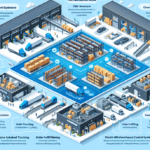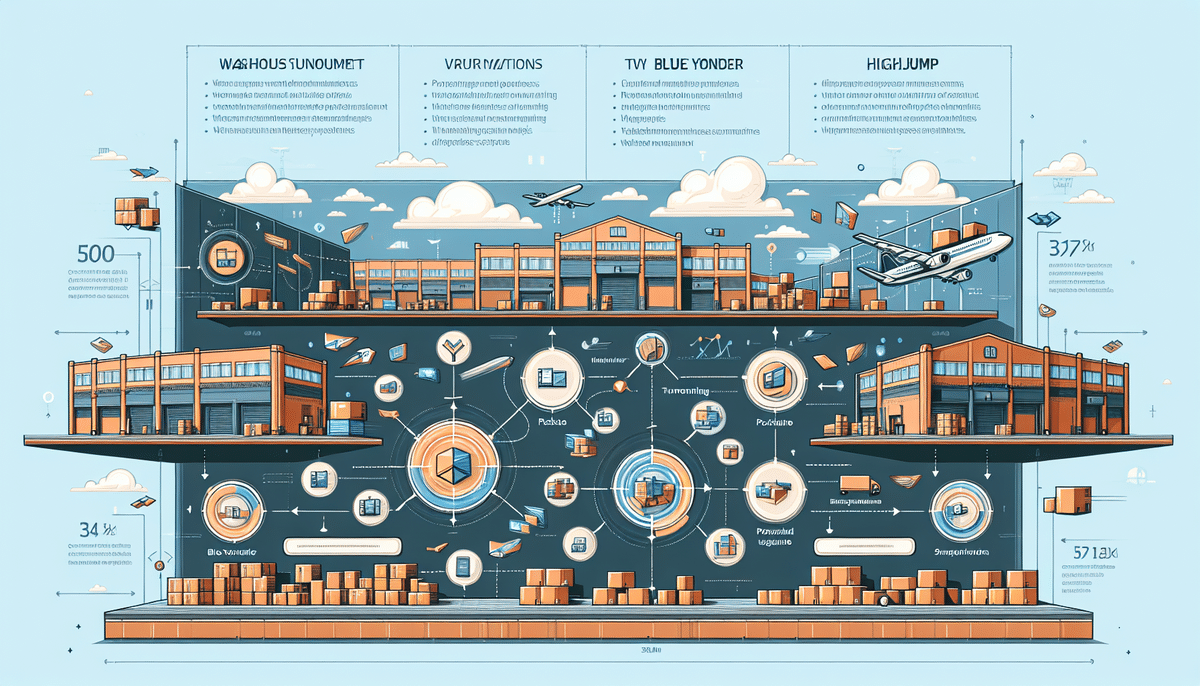Fishbowl Inventory vs Blue Yonder WMS: Comprehensive SEO-Optimized Comparison
Choosing the right Warehouse Management System (WMS) is crucial for optimizing your supply chain and inventory operations. Two prominent options in the market are Fishbowl Inventory and Blue Yonder WMS (formerly JDA Software). This article provides an in-depth comparison of these two solutions to help you make an informed decision tailored to your business needs.
Overview of Fishbowl Inventory
Fishbowl Inventory is a robust inventory management software designed primarily for small to medium-sized businesses. It offers a suite of tools for warehouse management, manufacturing, sales, and more, making it a versatile choice for businesses seeking comprehensive inventory solutions.
Key Features
- QuickBooks Integration: Seamlessly connects with QuickBooks for unified accounting and inventory management.
- Customizable Reporting: Generates tailored reports to meet specific business requirements.
- Barcode Scanning and Tracking: Enhances accuracy and efficiency in inventory tracking.
- Multi-Location Support: Manages inventory across multiple warehouses and locations with real-time updates.
- Mobile App: Facilitates on-the-go inventory management, allowing users to handle tasks remotely.
Pros and Cons
Pros:
- Integrates effectively with QuickBooks, simplifying accounting processes.
- Offers customizable reporting and advanced barcode scanning.
- Supports multi-location inventory management, ideal for expanding businesses.
- Provides industry-specific add-ons for manufacturing and e-commerce.
Cons:
- May lack advanced features required by large enterprises with complex supply chains.
- Customer support can be limited compared to larger software providers.
- Software updates may not be as frequent, potentially delaying access to new features.
While Fishbowl Inventory offers a user-friendly interface and valuable features for growing businesses, some users have reported challenges with software stability and a learning curve for those new to inventory management systems.
Overview of Blue Yonder WMS
Blue Yonder WMS is an enterprise-grade warehouse management system designed for large businesses with intricate supply chain needs. Renowned for its advanced analytics and integration capabilities, Blue Yonder WMS is a leader in the field of supply chain optimization.
Key Features
- Machine Learning and Predictive Analytics: Utilizes AI to forecast demand and optimize inventory levels.
- Advanced Reporting and Task Management: Provides detailed analytics and efficient task allocation.
- Real-Time Inventory Tracking: Ensures accurate and up-to-date inventory data across all locations.
- ERP Integration: Integrates seamlessly with various Enterprise Resource Planning systems for comprehensive supply chain management.
- Mobile Device Support: Empowers warehouse staff with mobile solutions for enhanced productivity.
Pros and Cons
Pros:
- Advanced machine learning capabilities for predictive inventory management.
- Robust real-time tracking and comprehensive reporting tools.
- Integrates with a wide range of ERP systems, facilitating end-to-end supply chain visibility.
- Scalable solution adaptable to businesses of various sizes.
Cons:
- May be overly complex for smaller businesses with simpler inventory needs.
- Requires extensive training for effective utilization.
- Higher cost structure, which might be prohibitive for some organizations.
Blue Yonder WMS is praised for its sophisticated features and scalability, making it a preferred choice for large enterprises seeking to enhance their supply chain efficiency. However, the complexity and cost may be a barrier for smaller organizations.
Comparing Fishbowl Inventory and Blue Yonder WMS
When evaluating Fishbowl Inventory and Blue Yonder WMS, it's essential to align their features with your business requirements. Here's a detailed comparison based on key aspects:
Features Comparison
- Integration: Fishbowl excels with QuickBooks integration, while Blue Yonder offers broader ERP system connectivity.
- Analytics: Blue Yonder provides advanced machine learning analytics, surpassing Fishbowl’s reporting capabilities.
- Scalability: Blue Yonder is more scalable, suitable for larger enterprises, whereas Fishbowl is ideal for small to medium businesses.
- Mobile Support: Both offer mobile solutions, but Blue Yonder’s are more comprehensive.
Cost Comparison
Cost is a significant factor in selecting a WMS:
- Fishbowl Inventory: Starts at approximately $4,395 for a perpetual license, with additional costs for add-ons and support.
- Blue Yonder WMS: Pricing varies based on business size and specific needs, typically higher than Fishbowl but offering extensive features.
For detailed pricing, it's advisable to contact Blue Yonder directly or request a quote tailored to your business.
Customer Reviews
Customer feedback provides insights into the user experience:
- Fishbowl Inventory: Rated 4.3 out of 5 stars on Capterra, users commend its QuickBooks integration and ease of use.
- Blue Yonder WMS: Holds a 3.7 out of 5 stars rating on Gartner, with praise for its advanced analytics but notes on complexity.
Key Differences Between Fishbowl Inventory and Blue Yonder WMS
Understanding the distinct differences helps in making a targeted choice:
- Target Audience: Fishbowl is tailored for small to medium businesses, whereas Blue Yonder targets large enterprises.
- Integration Capabilities: Fishbowl focuses on QuickBooks, while Blue Yonder offers extensive ERP integrations.
- Analytics and Reporting: Blue Yonder provides advanced predictive analytics; Fishbowl offers customizable but more basic reporting.
- Cost Structure: Fishbowl is generally more affordable, making it suitable for businesses with tighter budgets.
Making the Right Choice for Your Business
Deciding between Fishbowl Inventory and Blue Yonder WMS hinges on several factors:
- Business Size: Smaller businesses may find Fishbowl sufficient, while larger enterprises might require Blue Yonder’s extensive features.
- Inventory Complexity: Complex supply chains benefit from Blue Yonder’s advanced analytics and integrations.
- Budget: Consider the total cost of ownership, including licensing, implementation, and maintenance.
- Integration Needs: Ensure the WMS seamlessly integrates with your existing ERP or accounting systems.
- Future Growth: Choose a solution that can scale with your business’s expansion plans.
Consulting with a software expert and reviewing comprehensive customer testimonials can further guide your decision-making process.
Conclusion
Both Fishbowl Inventory and Blue Yonder WMS offer robust solutions for inventory and warehouse management, each catering to different business sizes and needs. By carefully evaluating your company's requirements, budget, and future growth plans, you can select the WMS that best aligns with your operational goals. Investing in the right system will streamline your warehouse operations, enhance inventory accuracy, and ultimately contribute to your business’s success.






















